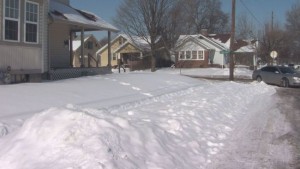Slip and fall – removing snow and ice
By Michael FaginGeneral Info, Historical Weather Data, Slip and FallWith 0 commentsSlip and fall – removing snow and ice is always a very interesting case to work on. Cities generally are not responsible for slip and falls – removing snow and ice is usually the obligation of landowners. Even moisture that may freeze on sidewalks in the morning is the responsibility of home and business owners. Here’s a sample of some of the laws for the Pacific Northwest. The Seattle Municipal Code states: ”It is the responsibility of the owner or occupant of private property to remove snow and ice on the sidewalks abutting his or her property in a timely manner and, if practical, prevent its becoming or remaining in an icy, ridged, uneven or humped condition or in a condition which is potentially hazardous to users of the public sidewalks.” So it seems that it is clear who is responsible for removing snow and ice as it relates to slip and fall.
For Hillsboro, Oregon (just outside of Portland) requires snow and ice to be removed, or for some kind of preventative measure to be taken, within eight daylight hours after wintry precipitation has fallen.
What are the laws for the East Coast. Well in Washington DC District law requires property owners to clear snow and ice from sidewalks, handicap ramps and steps abutting their property within the first 8 daylight hours after snow, sleet or ice stop falling. This applies to all property owners residential, commercial, federal, and municipal. If ice cannot be cleared without damaging the sidewalk, then property owners may spread sand or salt to make the sidewalks safe.
Of course in the western parts of the Pacific the amount of snow on the ground during the winter is usually very limited. Many times there is none and other times snow on the ground is measured in fractions of an inch. Thus it becomes tricky determine how much snow might still be on the sidewalk or parking lots a day after we have some snowfall.
For the the Midwest and East Coast that is different with snowstorms totals are measured in feet of snow on the ground not in inches. However, there are times that within several days there is a warm up and much of the snow is gone.
West Coast Weather works as a forensic meteorologist and expert witnesses on many cases from slip and fall to major airline crashes covering the Northwest to Europe. I have to say the most difficult cases we work on is a slip and fall cases. The most difficult part is getting local weather data for the “exact location.” Of course we always enjoy working on these slip and fall cases to determine if snow and ice were indeed removed.

Photo credit: “WLFI”
Article provided by Meteorologist Geoff Linsly
